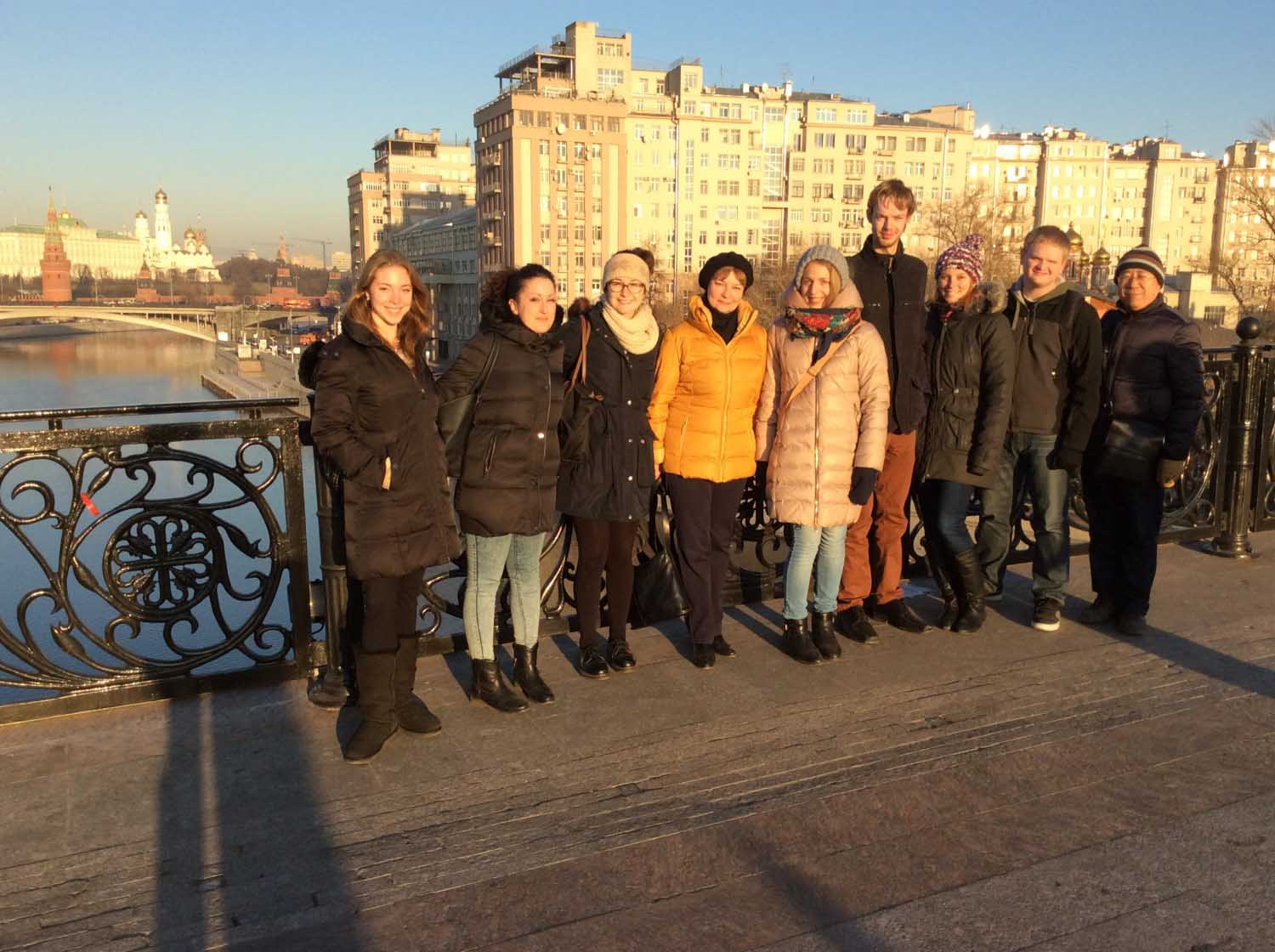House on the Embankment Museum /
Mузей дом на набережной
ул. Серафимовича д.2
As part of my Russian language course at Moscow State University, my professor took us to the House on the Embankment Museum. The museum sits on the Bersenevskaya Embankment (Берсеневская набережна), which is along the Moscow River directly across from the Cathedral of Christ the Savior (Храм Христа Спасителя). The Soviet Government ordered the construction of “Homes for Senior Officials of the Central Executive Committee and Council of the People’s Commissars of the USSR, the Central Executive Committee and Council of the People’s Commissars of the RSFSR” (“Дома для ответственных работников ЦИК и СНК СССР, ВЦИК и СНК РСФСР”) in 1927 to alleviate the housing shortage in Moscow and accommodate the influx of Government and Communist Party officials, a society of old Bolsheviks and foreign nationals which occurred after Vladimir Lenin moved the capital from St. Petersburg (then Petrograd) to Moscow. The Soviet Jewish architect, Boris Mikhailovich Iofan (Борис Михайлович Иофан) designed the building. After many revised plans and missed deadlines for completion of the construction, the apartment building opened its doors to eager apartment seekers in 1931. The building’s relatively close location to the Kremlin initially lent it a lofty status. It came to be known as the “Government House” (“Дом правительства»).
The building held 505 apartments and had the ability to house 2,000 people. Each apartment consisted of a single room in a larger, communal apartment in which there was one kitchen. During its early history, incoming tenants were assigned apartments based on rank; high-ranking party officials and more important individuals, such as the famous General Georgy Konstantinovich Zhukov, were given larger, better-situated apartments, such as those that overlooked the river. The building was more of a complex in that it contained such conveniences as a hairdresser, grocery stores, a laundromat, a communal dining room, a post office, a bank, a movie theater, a club, and even a kindergarten.
Unfortunately, the building is most famous today for its sinister history as the site of hundreds of arrests of so-called “enemies of the people” during the Stalinist purges. We were told on our tour that officials of the NKVD (People’s Commissariat for Internal Affairs) (НКВД (Народный комиссариат внутренних дел)), which was the Soviet secret service before the creation of the KGB (Committee for State Security) (КГБ (Комитет государственной безопасности)), would often slip into communal apartments at night via the garbage disposal room in each communal apartment and enter the individual apartment of a family from there. According to a former tenant, one apartment served as a base to allow the NKVD to monitor all of the building’s phone lines as well. Arrested residents, like other victims of such repression, were either sent to gulags or executed. During these purges over 550 residents were killed.

Perhaps the most famous piece of literature written about this building is the 1976 novel Дом на Набережной (House on the Embankment), by Yury Valentinovich Trifonov (Юрий Валентинович Трифонов). A renowned Soviet author, Trifonov lived in the apartment building from 1931 until 1939 and lived through the breakup of his family due to political arrest. It is possible to purchase his book at the museum. Today the apartments in the House on the Embankment are quite pricy; however, while many people are eager to live in one of these apartments located on the Moscow riverbank, others remain disturbed by the building’s past, and stay away.
To get there from Moscow State University, one can take the red metro line (Сокольническая линия) to Kropotkinskaya Station (станция Кропоткинская). From there, one must walk directly towards and then past the Cathedral of Christ the Savior (Храм Христа Спасителья), cross the Moscow River via the Patriarch Bridge (Патриархий мост). Once at the end of the bridge, one should take the first exit to the on the right and walk down the stairs, then make a right and walk to Bersenevskaya Embankment. From there, one must walk for about seven minutes, make a right onto Serafimovicha Street (улица Серефимовиса), and in about thirty seconds the museum entrance will appear on the left.







